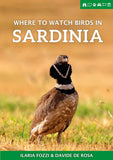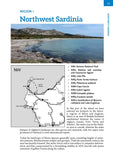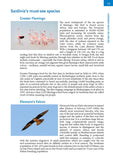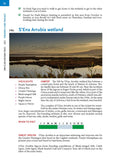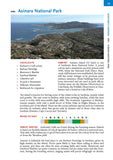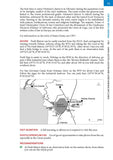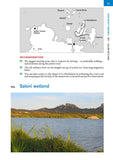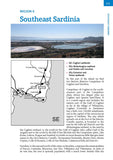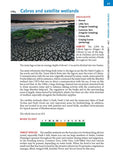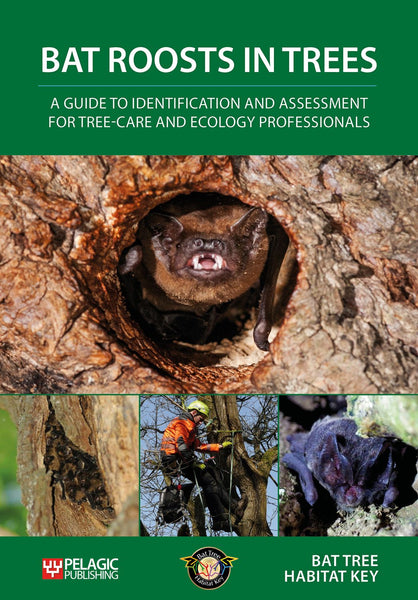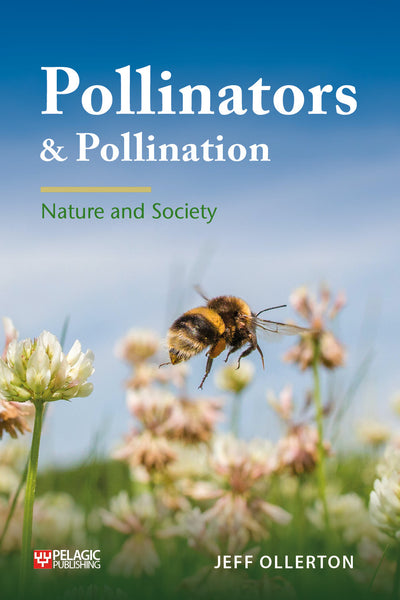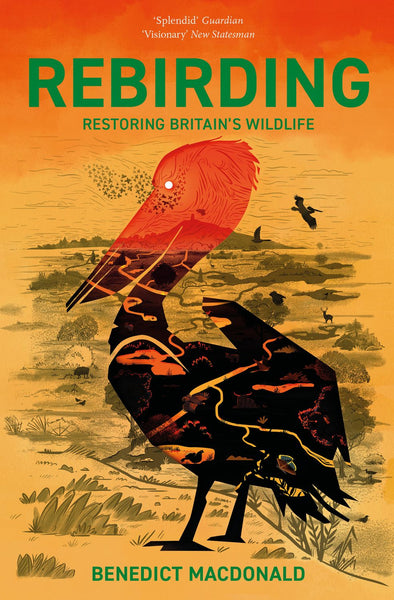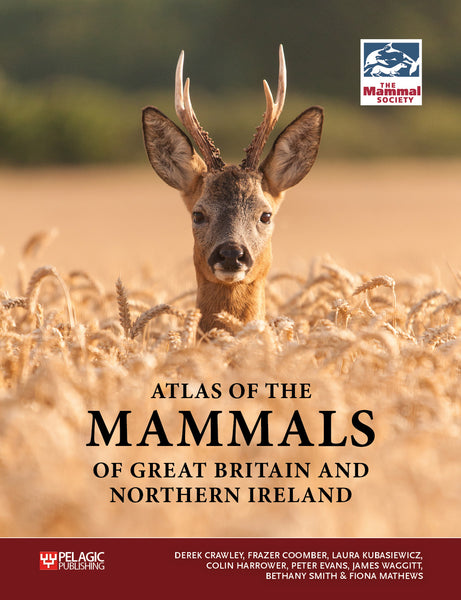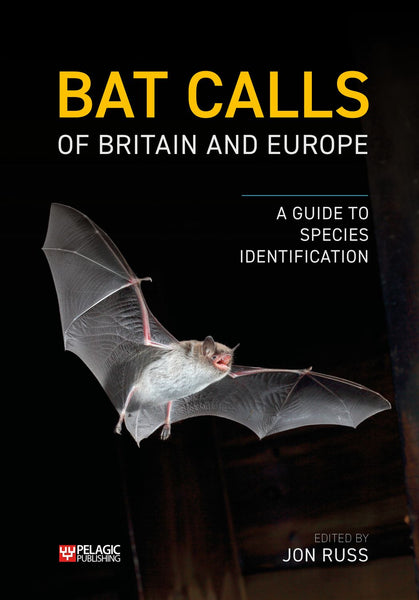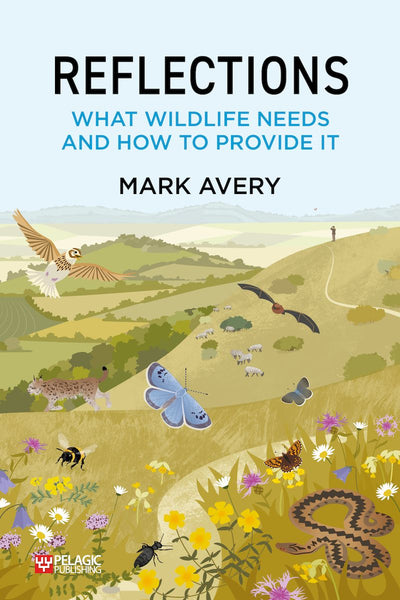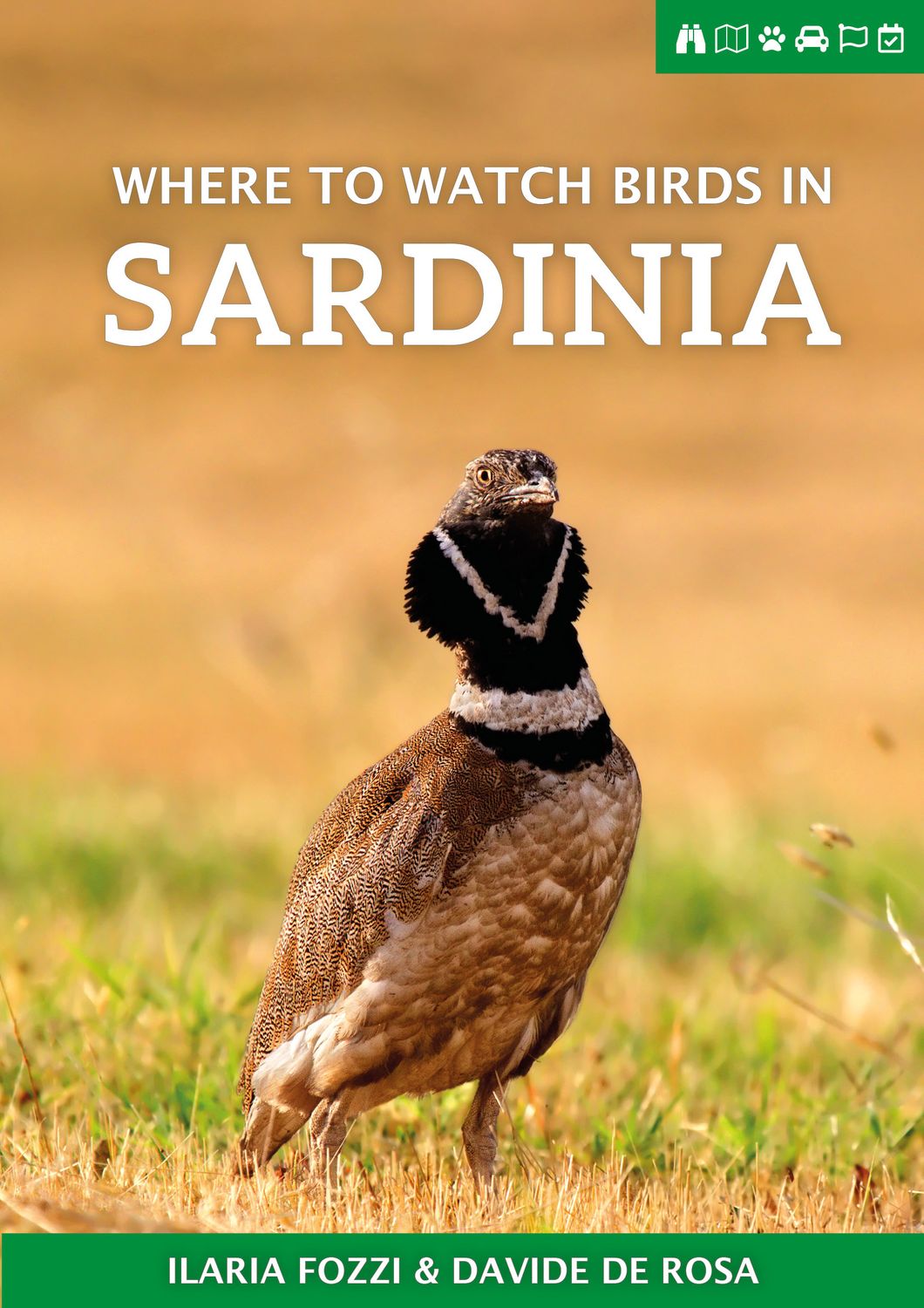
Where to Watch Birds in Sardinia
- Local knowledge on where and when to see Sardinia's birds
- Detailed maps to get you to the right spots for the best birds
- Background information on other wildlife and travel practicalities
- The book convinced me to go bird watching in Sardinia. It is very practical, comprehensive and clear. —Walter Belis
- birding
- birds
- birdwatching
- italy
- natural history
- ornithology
- sardinia
- site guide
Description
Sardinia is in the middle of the western Mediterranean between Europe and Africa. Its location on the Mediterranean flyway makes it an important refuelling stop for migrating birds – especially on its extensive wetlands. A popular destination for birders and naturalists, Sardinia has a great diversity of fauna and flora, along with rich cultural and historical attractions.
Where to Watch Birds in Sardinia, written by two ornithologists with extensive experience of Sardinian birding, provides detailed information on the 43 key birding sites in Sardinia. For each site the target species are highlighted, along with information on habitat, when to visit, other wildlife, facilities, access, how long you'll need, the photographic opportunities and recommendations for your visit. A map of each site helps with planning and navigation to the site.
Often described as a micro-continent for the variety of its ecosystems, Sardinia has mountains, forests, lowlands, gorges, wetlands, long sandy beaches and rocky shores. It is home to around 300 bird species, 41 mammals, 18 reptiles and 8 amphibians as well as a hugely diverse invertebrate fauna. Owing to its geographical isolation, altitudinal variation and limited human presence, Sardinia has retained many habitats that are favourable for the development and preservation of a large number of endemic plants, accounting for 10 per cent of the island's flora and including several orchid species.
Sardinia's 'must-see' birds include Greater Flamingo, Eleonora's Falcon, Purple Swamphen, Little Bustard, Audouin's Gull, Marmora's Warbler, Corsican Finch, Griffon Vulture and Barbary Partridge. In spring, April and May are the best months for migration, while for the autumn migration the best period stretches from the end of August to the end of October. Wetlands are the most important sites in springtime, with many species stopping for some days before going north. During the breeding season these areas are very important for Greater Flamingo, Audouin's Gull, Little Tern and several other species of waders, gulls and terns. The breeding season is also a good time to see 'special' resident species like the Little Bustard in display or to hear the flight call of the Corsican Finch. In winter, large concentrations of ducks and gulls are found on the island, with the occasional vagrant from Siberia or North America.
Readership
This is a guide for birders visiting, or planning a visit to Sardinia. It is not a field guide – it provides detailed information on where to watch birds in Sardinia.Table of Contents
Archaeology
Architecture
Celebrations and country festivals
Sport and outdoor activities
Practical information
Transport
Accommodation
Food
How to use this book
Regions and sites covered
Site accounts
Maps
Itineraries
Birdwatching in Sardinia
Hotspots
Other areas
Vagrants
Birding ethics
Sardinia must-see species
Region 1: Northwest Sardinia
NW1 Asinara National Park NW2 Stintino salt marshes and Casaraccio lagoon NW3 Lake Pilo NW4 Porto Torres harbour NW5 Platamona wetland NW6 Capo Caccia NW7 Calich lagoon NW8 Campeda plateau NW9 Goceano woods NW10 Sant'Antioco di Bisarcio cathedral and Lake Coghinas
Region 2: Northeast Sardinia
NE1 Coghinas river mouth NE2 Monte Limbara NE3 Capo Testa NE4 La Maddalena National Park NE5 Saloni wetland NE6 Capo Figari and Figarolo NE7 Olbia wetland NE8 Island of Tavolara NE9 San Teodoro lagoon
Region 3: Central West Sardinia
CW1 Bosa CW2 Capo Mannu CW3 Sale 'e Porcus wetland CW4 Cabras and satellite wetlands CW5 Mistras lagoon CW6 Santa Giusta lagoon and surrounding wetlands CW7 S'Ena Arrubia wetland CW8 Marceddì lagoon CW9 Giara di Gesturi
Region 4: Central East Sardinia
CE1 Monte Albo CE2 Orosei Gulf CE3 Supramonte of Oliena CE4 Gennargentu massif
Region 5: Southwest Sardinia
SW1 San Pietro island SW2 Bau Cerbus SW3 Santa Caterina wetland and Sant'Antioco lagoon SW4 Mulargia, Porto Botte and Baiocco wetlands SW5 Porto Pino wetlands SW6 Chia basin SW7 Nora lagoon SW8 Monte Arcosu WWF reserve
Region 6 Southeast Sardinia
SE1 Cagliari wetlands SE2 Molentargius wetland and Poetto salt marshes SE3 Colostrai and Feraxi wetlands
Suggested itineraries
Itinerary 1: coast to coast in the north of Sardinia - from Olbia to Stintino
Itinerary 2: from north to south along the west coast - from Stintino to Cagliari
Selected bibliography
About the authors
Index of sites
Index of species: Birds; Plants; Molluscs; Foraminifera; Corals; Arthropods; Fish; Amphibians
Reviews
- I recommend all birders to have this book in the library, ready to be used in one of the next trips.
—Bruno Massa, Avocetta (Italian Journal of Ornithology) - ...this book provides all that you will need to plan a successful trip.
—Keith Betton, British Birds - This is a well written and well produced publication, ideal for field use. ... I recommend that you buy this book and visit this wonderful, thinly populated and still rather wild island. There is much to discover there.
—Andrea Corso, Ardeola - Spread over 6 regions, the 43 interesting and easy-to-find sites are described with useful information, a photo, a small access map, key species and - an unusual innovation - the journey time required together with practical recommendations.
—Jean Marc Thiollay, Ornithos - The book convinced me to go bird watching in Sardinia. It is very practical, comprehensive and clear.
—Walter Belis
About the Author
Ilaria Fozzi was born in 1984. After graduating in natural sciences in Sassari, she has worked since 2010 with the Wildlife Observatory of Asinara National Park, in northern Sardinia. She is an apprentice ringer, a data collector for the Italian Ornithological Monitoring and for IWC (International Waterfowl Census). She has collaborated in several bird ringing projects in Italy and abroad.
Davide De Rosa is an ornithologist with particular expertise in the ecology, migration and population dynamics of birds in Italy, especially in southern Italy and Sardinia. In recent years, his studies have focused on Lanner Falcons and Red Kites, and on the impacts of climate change on bird communities. He is also interested in relationships between pollution and the physiology of birds in agricultural landscapes. He is a ringer, a data collector for the Italian Ornithological Monitoring and for IWC (International Waterfowl Census). He has collaborated in several bird ringing projects in Italy and abroad, and organises birdwatching tours in Sardinia.
Bibliographic Information
 iv, 140 pages
iv, 140 pages - 57 figures, 52 maps
- BISAC NAT004000, SCI070040, NAT043000, TRV009110
- BIC WNCB, PSVW6, 1DSTA






